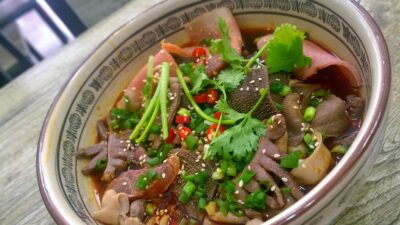In the realm of culinary techniques, steaming stands out as a healthful, efficient, and flavorful method for cooking a wide array of ingredients. Whether you’re a novice in the kitchen or a seasoned chef, mastering the art of steaming can elevate your dishes and unlock a spectrum of flavors. In this article, we’ll explore the benefits of steaming, the types of ingredients best suited for this technique, and tips for perfecting your steaming skills.
The Benefits of Steaming
1. Retains Nutrients
One of the most significant advantages of steaming is its ability to preserve the nutrients in food. Unlike boiling, where water can leach vital vitamins and minerals, steaming allows ingredients to cook in their own juices, ensuring that they retain their nutritional value.
2. Enhances Flavor
Steaming can intensify the natural flavors of ingredients. By cooking them gently and evenly, you allow the inherent tastes of vegetables, grains, and proteins to shine, often requiring less added seasoning.
3. Improves Texture
The gentle nature of steam cooking helps maintain the structure of ingredients. Vegetables, for instance, retain their crunch and remain vibrant in color, while proteins can achieve a tender, juicy texture without drying out.
4. Promotes Healthy Cooking
With no added fats or oils required in the steaming process, this method is an ideal choice for those seeking a healthier lifestyle. It allows you to enjoy tasty dishes without the extra calories.
Ingredients That Shine When Steamed
1. Vegetables
Green vegetables like broccoli, asparagus, and green beans thrive when steamed. They cook quickly, retaining their vibrant color, nutrients, and crisp texture. Root vegetables like carrots and potatoes also work well but may require slightly longer cooking times.
2. Fish and Seafood
Steaming is particularly effective for cooking delicate proteins. Fish, such as salmon or tilapia, becomes flaky and retains its moisture, enhancing its natural flavors. Shellfish like shrimp and mussels also benefit greatly from this technique.
3. Grains
Whole grains like quinoa and brown rice can be cooked perfectly with steam. Using a steaming method, you can achieve a fluffy texture while infusing them with added flavors from broth or herbs.
4. Poultry
Chicken breasts or dumplings can be steamed for a succulent result. Steaming allows the meat to cook through evenly, remaining moist and tender while absorbing any aromatics added to the steaming liquid.
Perfecting the Steaming Technique
1. Choosing the Right Equipment
While you can steam using a variety of methods—from a bamboo steamer to an electric steamer or even a pot with a steaming basket—selecting the proper equipment is essential. Ensure that your steaming vessel fits well over the heat source, allowing for efficient steam circulation.
2. Experiment with Flavors
Enhance the flavor of the dishes you steam by adding herbs, citrus slices, or spices to the water. Infusing the steam with these elements will impart subtle fragrances and flavors that elevate your meal.
3. Timing Is Key
Overcooking is the enemy of steaming. Use a timer to ensure that you don’t lose the vibrant colors and crisp textures that make steamed dishes so appealing. Refer to cooking charts or guides, but adjust times based on the size and thickness of your ingredients.
4. Layer Wisely
When steaming multiple items, place denser vegetables on the bottom and more delicate ingredients on top to ensure even cooking. This layering technique maximizes space and ensures everything is cooked to perfection.
5. Cool Quickly
If you are preparing a large batch, consider an ice bath after steaming to halt the cooking process. This technique is especially useful for meal prep and helps maintain the vibrant colors and crispness of your vegetables.
Conclusion
Steaming is a powerful culinary technique that not only promotes health and wellness but also enhances the natural flavors and textures of your ingredients. By embracing the art of steaming, you can transform simple dishes into gourmet experiences. With practice, experimentation, and a bit of creativity, you’ll find that steaming not only saves time but also unleashes incredible flavors in your kitchen. So grab your steamer, gather your ingredients, and start your journey to perfectly steamed dishes!



